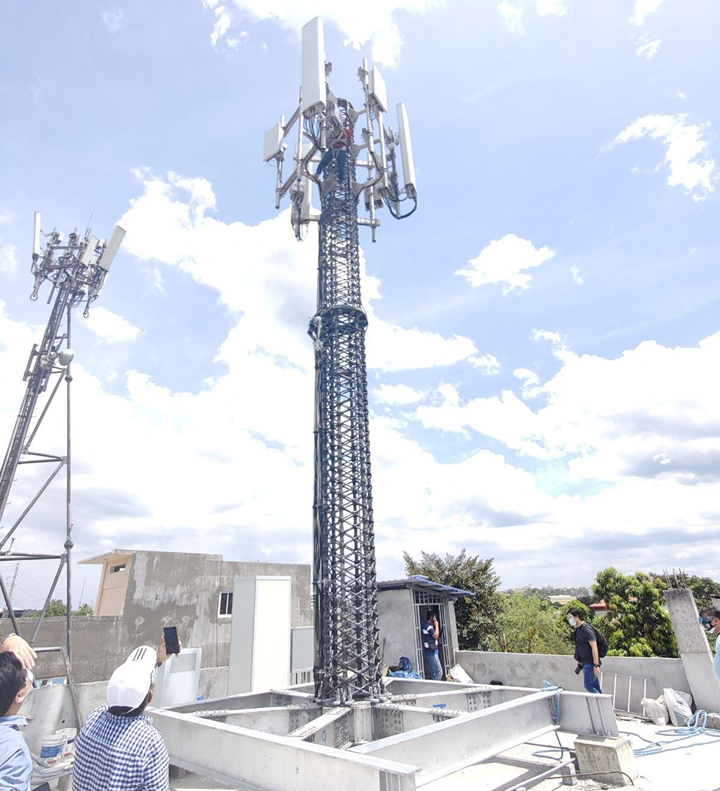Isotruss stands up Philippines manufacturing facility
Utah-based manufacturer of truss-based composite structures opens plant to fabricate cell phone towers for Asian market.

IsoTruss composite cell tower in rooftop installation. Photo Credit: IsoTruss
Inc. (Springville, Utah, U.S.) reports that it has opened a new 11,500-square-foot facility in the Clark Freeport Zone in Angeles, Philippines, to fabricate composite cell phone towers using the company’s truss-based design and manufacturing process.
Sam Wilding, director sales and engineering for IsoTruss, says the facility will employ approximately 20 people to start and produce monopole towers in heights up 100 feet and diameters up to 40 inches.
IsoTruss’s customer in the Philippines is , which Wilding says was drawn to the IsoTruss tower solution by its light weight, flexibility and modularity in structural design, and easy installation, which make it particularly suitable for rooftop locations in urban areas.
“The Philippines environment — heat and humidity — is also very hard on metallic structures,” he adds. “Our towers perform very well in such conditions.” Wilding also notes that IsoTruss towers have highly favorable lifecycle analysis (LCA) profiles, which compare favorably to legacy cell tower materials.

IsoTruss composite tower ground installation. Photo Credit: IsoTruss
IsoTruss is the name of the company and the company’s technology. IsoTruss the technology combines longitudinal and helically wound members to build a series of isosceles triangles that form a truss of pyramids. Fabrication revolves primarily around carbon fiber/epoxy towpreg that is filament wound over specialized tooling using a proprietary pattern.
Wilding notes that the challenge of taking delivery of carbon fiber is the only logistical hurdle that the new facility faces to being fully operational. He also reports that IsoTruss R&D is performed at the company’s facilities in Utah, with the Philippines factory providing added manufacturing services. As IsoTruss grows, Wilding says he expects the company will establish new facilities in other regions.
Related Content
-
Plant tour: Airbus, Illescas, Spain
Airbus’ Illescas facility, featuring highly automated composites processes for the A350 lower wing cover and one-piece Section 19 fuselage barrels, works toward production ramp-ups and next-generation aircraft.
-
Filament winding increases access to high-performance composite prostheses
Steptics industrializes production of CFRP prostheses, enabling hundreds of parts/day and 50% lower cost.
-
The potential for thermoplastic composite nacelles
Collins Aerospace draws on global team, decades of experience to demonstrate large, curved AFP and welded structures for the next generation of aircraft.






